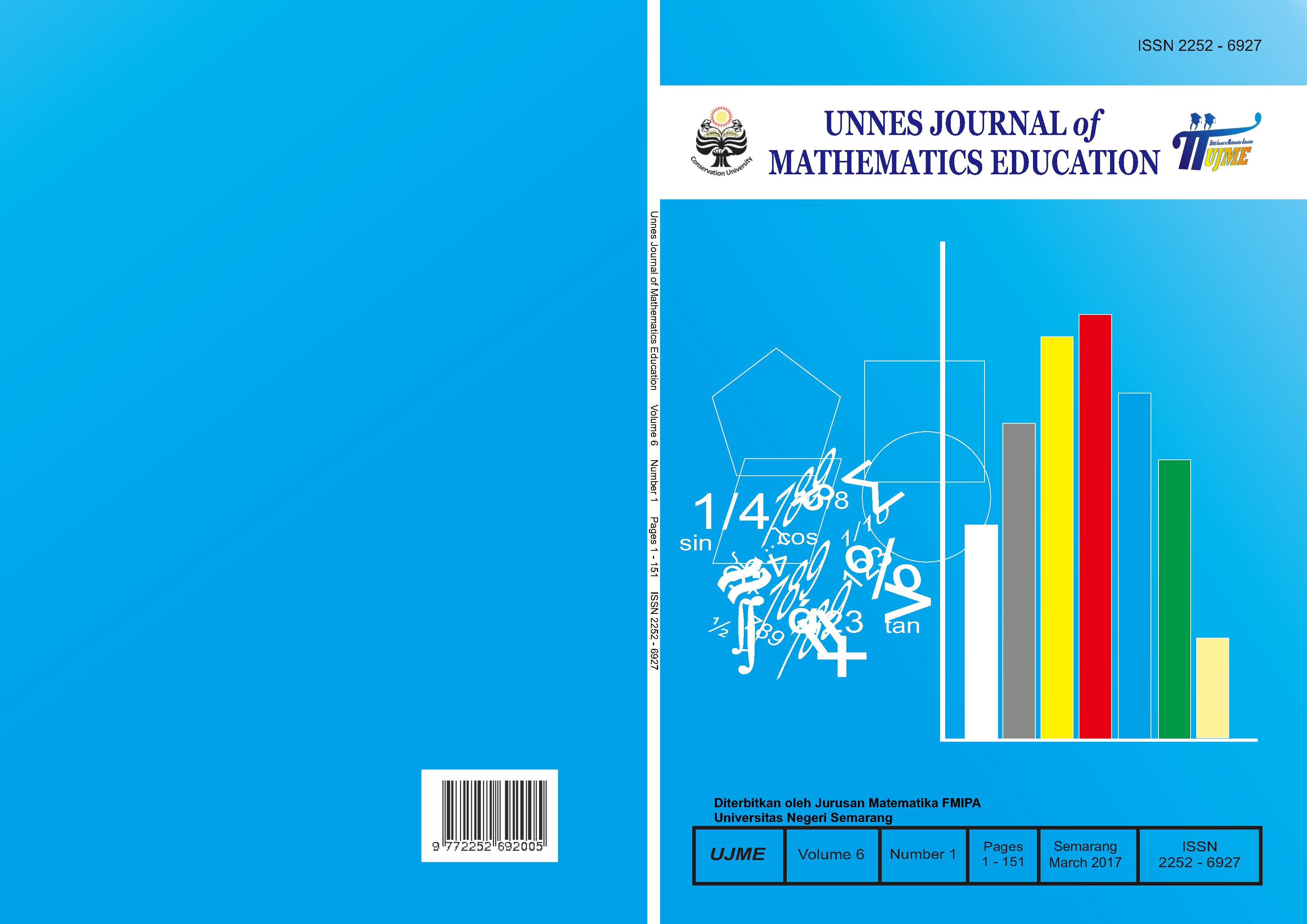Analysis of Mathematical Problem Solving Ability for Tenth Grader of SMK Boarding School in Terms of Learning Styles
##plugins.themes.academic_pro.article.main##
Abstract
The purpose of this research was to describe mathematics problem solving skills of SMK Class X boarding school students which in terms of learning styles by using Anchored Instruction models based neuroscience. This is a qualitative research. The subjects of this research are 9 students of SMK N Jawa Tengah, were classified into 3 to the learning styles that is visual, auditory, and kinesthetic.The methods of collecting data in this research using a questionnaire of learning style, mathematics problem solving test, and interview. Analysis of mathematics problem Âsolving skills refer to the stage of the Polya problem solving. The results of this research showed that: 1) students 'visual and auditory with the same number are most numerous in the class X SMK N Jawa Tengah, it points out that the habits of the three subjects in accordance with the characteristics of learning styles such as when learning to learn math students visual prefer to read a book with pictures or tables, students auditory prefers to listen to the explanation of the teacher, while students kinesthetic rather try or practice directly through exercises; 2) in general, students' visual, auditory, and kinesthetic at high group, medium group, and low group able to solve the problem through the stages of understanding the problem, devising a plan, carrying out the plan, and looking back.
##plugins.themes.academic_pro.article.details##
References
DePorter & Hernacki. (1992). Quantum Learning: Membiasakan Belajar Nyaman dan Menyenangkan. Translated by Alwiyah. Bandung: Kaifa.
Fajariyah, Sukestiyarno, Y .L., Masrukan, & Junaedi, I. (2012). Keefektifan Implementasi Model Pembelajaran Problem Posing dan Creative Problem Solving Terhadap Kemampuan Pemecahan Masalah Pesrta Didik di SMP N 1 Tengaran. Unnes Journal of Mathematics Education, 1 (2) (2012). Tersedia di http://journal.unnes.ac.id/ sju/index.php/ujm/search/results. [diakses 01-06-2016].
Maslihah, S. (2011). Studi Tentang Hubungan Dukungan Sosial, Penyesuaian Sosial Di Lingkungan Sekolah dan Prestasi Akademik Siswa SMPIT ASSYFA Boarding School Subang Jawa Barat. Jurnal Psikologi Undip Vol. 10, No. 2. [diakses 05-01-2016].
National Council of Teachers of Mathematics (NCTM). (2000). Principle and Standards for School Mathematics. NCTM.
OECD. (2010). PISA 2009 results: What Students Know and Can Do. Student Performance in Reading, Mathematics, and Science (Volume I). Tersedia di http//dx.doi.org/10.1787/9789264091 450-en [diakses pada tanggal 6 Juli 2015].
Peraturan Menteri Pendidikan Nasional (Permendiknas) Nomor 22 Tahun 2006 Tentang Standar Isi Untuk Satuan Pendidikan Dasar dan Menengah.
Polya, G. (1973). How to Solve It: A New Aspect of Mathematical Method. New Jersey: Princeton University Press.
Sugiyono. (2010). Metode Penelitian Pendidikan (Pendekatan Kuantitatif, Kualitatif, dan R & D). Bandung: CV Alfabeta.
UU Nomor 20 Tahun 2003 tentang Sistem Pendidikan Nasional. Tersedia di http://kemenag.go.id/file/dokumen/U U2003.pdf [diakses 15-12-2015].
